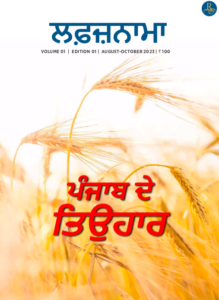LET’S KILL ALL OUR DARLINGS…

“In writing, you must kill all your darlings” said William Faulkner.
One morning, as I sat pensively thinking about the above assertion, my darling, always too eager to break my reverie, offered, “A penny for your thoughts.”
“I must kill all my darlings!” I announced with the ferocity of a night prowler.
The poor fellow looked at me with puppy eyes and said, “What have I done?”
I burst out laughing and after a dramatic pause, explained to him that ‘to kill all your darlings’ is a phrase that implies that one must try and give up all that one holds dear, things that one can get attached to in the long run.
William Faulkner advised that while writing, an author must get rid of unnecessary details and elements, including digressing storyline, tertiary characters, superfluous words, phrases and even sentences. He suggests that though the writer must have worked hard to create them in the beginning, they must be pruned or removed for the sake of ‘overall’ betterment of the creative piece. Time and again, seasoned authors and critics have advised the young and budding and the not-so-young and budding creative writers to seek an “honest opinion” of their work through ‘outside eyes’.
Numerous pitfalls await a writer on his creative sojourn which need to be checked mostly by the person himself or by someone who can provide an ‘objective input’. While one can easily handle problems such as over-exposition of the plot, out-of-breadth characters and other unrelated elements with a little self-awareness or peer review, language remains the trickiest of all. Taming the language is like ‘taming the Shrew’ or ‘nailing the jelly to the wall’ and one must remember to be ruthless during the process. Stephen King went so far as to say,
“Kill your darlings, kill your darlings, even when it breaks your egocentric little scribbler’s heart, kill your darlings.”
Every language has its nuances and so does lingua franca. Writers take great pains to adorn their language with poetic and literary devices. However, a thin line demarcates the ‘ornate language’ from the ‘purple prose’– a phrase commonly used for language that is too grand or unnecessary ornate than what is required. Oxford Learner’s Dictionary calls purple prose ‘a piece of writing that is too grand in style’. Masterclass.com, a blog dedicated to literary basics, explains it thus,
‘If you find that a passage in your own writing only draws attention to your prodigious vocabulary, or that it exists primarily to boost word count, you may be guilty of using purple prose—or at the very least “purple patches” of prose.’
Repetition, which is an oft-employed figure of speech and is used as a literary device for emphasis and to lay significance on important things by poets and writers, has been subject to much disdain when used in excess. Poet John Dryden in his satirical piece, Mac Flecknoe, criticizes his contemporary, Shadwell for needless repetition and calls him ‘Master of Tautology’. Critics have also cited William Makepeace Thackeray’s 19th century novel Vanity Fair as a classic example of ‘purple prose’.
To avoid literary snares, many creative writers follow the safe route of ‘Beige prose’ which is the opposite of ‘purple prose’. It involves direct and brief description, and compact and terse sentences. Well, for those who are looking for a ‘middle path’ there is always the option of ‘Orange Prose’– a style of writing where the writer puts across his point without using ‘extra flowery language but doesn’t shy away from a bit of pizazz.’ (Carmen Loup)
It’s time to play the game of colours. Tippy, tippy, tap…what colour you want?















